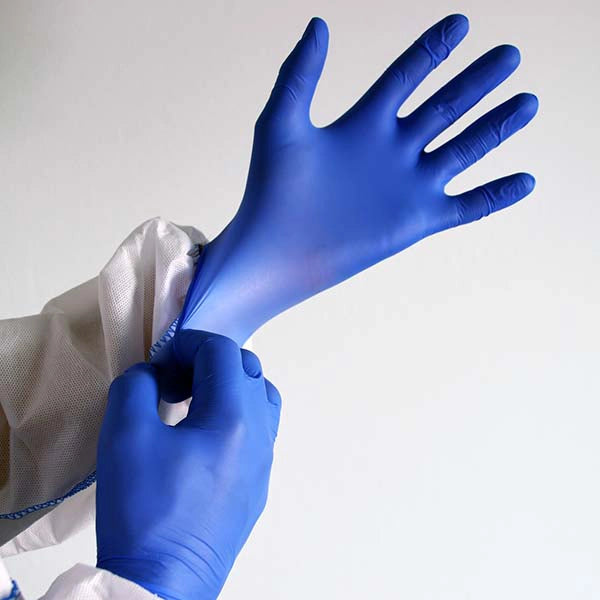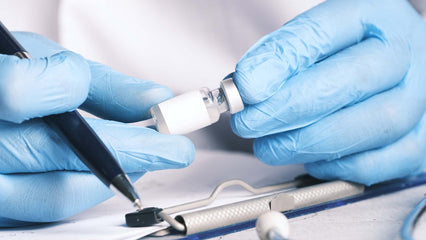Disposable gloves are invaluable in a variety of applications. In a diverse array of roles, such as housekeeping, construction and food preparation, these gloves help make tasks more comfortable, while also providing an added layer of hygiene and protection. As a result, you’ll likely have a box or more of disposable gloves around your home or office at any given time.
However, with so many disposable gloves on the market, it can be challenging to know how long they can be stored without compromising the effectiveness of the product. Thus, if you have gloves that are still viable, but have been sitting on the supply shelf for a long time, you probably don't know how long before they become ineffective.
How long does a rubber glove last? This is a question that often comes up, especially when you buy them in bulk. With so many businesses out there ordering disposable gloves right and left, how can they know how long to store them before use?
Disposable Gloves Shelf Life Guidelines
The shelf life of a glove depends on how it is manufactured, the materials used in its construction, and on how the glove is stored. The useful life of disposable latex and nitrile gloves varies, but a general rule of thumb is that latex gloves last three years.
On the other hand, disposable gloves made of synthetic materials like nitrile, neoprene, PVC, polyethylene, and other similar kinds of disposable gloves have an approximate five-year shelf life.
Although manufacturers will not guarantee it, some disposable nitrile gloves have been known to last up to 10 years in storage without any obvious or significant damage, provided they are kept in their original packaging and away from moisture. If the gloves have been removed from their original packaging or have been exposed to moisture, however, their shelf life is reduced considerably.


Glove Manufacturer Guidelines
The Food and Drug Administration does not require glove manufacturers to set a shelf-life date. Some manufacturers, however, specify that these their disposable gloves products may be kept unused for up to five years.
While manufacturers often provide shelf-life guidelines for their products. However, when the product's seal has been broken, when the gloves have been removed from their original packaging, or if they have been exposed to moisture, the expiry date guidelines from the manufaturers are not applicable.
Disposable gloves have a reduced shelf life when they are exposed to ozone or ultraviolet light for extended periods and stored in areas with high temperatures.
For sterile gloves, the Denver-based Association of Operating Room Nurses, in its 1999 "Standards, Recommended Practices and Guidelines," recommended that sterile gloves be considered sterile unless the package had been damaged or opened.
Assessing A Disposable Glove
The Food and Drug Administration advises that, even beyond their expiration date, gloves may still offer some protection. When you cannot know the expiration date of the gloves, look for signs that indicate whether or not the gloves are safe to use.
If gloves appear to be usable, they probably are. When gloves are not visibly damaged, you can stretch them to their full length without cracking, breaking or tearing. This means they are usually safe and will provide adequate protection.
Unsafe gloves will be obviously defective. If gloves are discolored, have visible holes or tears, or show other signs of wear, they should be discarded. Also, gloves that are not safe to safe are brittle and will easily tear —particularly at the fingertips and the seams—and will have hardened surfaces that crack when stretched.

Storage Guidelines
When storing disposable gloves, such as latex and nitrile, there are a number of tips to keep in mind that will help you maximize the shelf life of your disposable gloves.
- Store disposable nitrile and latex gloves in a cool, dark area to prevent the materials from degrading. Put the disposable gloves in a dark place free from dust and other harmful materials such as under the sink, in a clean cabinet in the kitchen, bedroom, or garage.
- To preserve the integrity of your gloves, store them in a box or drawer that is hidden from ozone and UV light. This includes fluorescent bulbs and some electrical equipment that generate ozone. Natural latex gloves are particularly sensitive to these types of lights, so be sure to shield them from exposure.
- Rubber gloves are particularly sensitive to heat. Therefore, it is important to store disposable gloves away from heat sources like radiators or steam pipes.
- To ensure proper glove performance, store them in areas where the temperature is 70 to 90 degrees Fahrenheit. Therefore, it is beneficial to store natural rubber latex gloves at an optimal temperature range of around 50 – 72° F.
- Do not remove the protective seal on your surgical gloves until you are ready to use them. Exposure to harmful particles like dust, moisture, or even high temperature can damage a disposable glove's functionality, regardless of how long its shelf-life is.
Conclusion
There is no set rule as to how long gloves can be used after purchase. However, there are some guidelines that you can use to determine whether or not your disposable gloves are still viable (and safe) for use. Each type of glove will vary in how long it can be stored before it becomes ineffective.
Whether you are a maintenance worker, a housekeeper or a military supply specialist, it is important to know how long rubber gloves will last before they start to break down or before they no longer provide the protection that they need to. While specifics vary based on several variables, including the brand of glove and the thickness of the gloves, you can extend their usability by keeping them stored in cool and dry areas.




